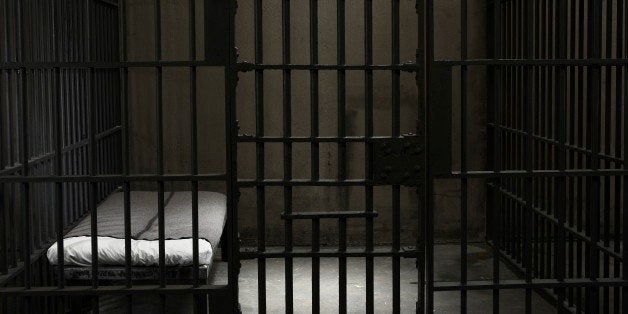
California is rightly regarded as a progressive beacon. But in this reliably blue, profoundly innovative state, we have witnessed the growth of a massive, inhumane and costly incarceration system.
Worst still, people of color bear the brunt of this broken system. The U.S. Sentencing Commission found that courts give African-Americans sentences that are longer than those for whites convicted of the same crime. And The Sentencing Project found that black defendants are 20 percent more likely to face prison time. Our massive incarceration industry locks up too many people, wastes too much money, ruins too many lives and violates our sense of racial fairness - all while failing to make our communities much safer.
The story of how this came to be offers lessons for how to roll back mass incarceration and reform our criminal justice system nationwide. When Jerry Brown left the governor's office in 1983, California kept only 34,000 people behind bars. That number peaked in 2006 at 173,000. California, a state always dreaming of tomorrow, spends more locking up people for yesterday's mistakes than it does educating its college students.
In the face of inhumane over-crowding, federal judges have capped prison populations and demanded the release of prisoners. They have clashed with Governor Brown in his latest term. The governor's preferred solutions -- further burdening local jurisdictions and partnering with the worst for-profit prisons -- are proving either irresponsible, unworkable, or both.
The status quo in our jails and courthouses is bad for California, bad for America and bad for communities of color. How did it come to this? Where do we go from here?
First, we need bipartisan solutions. Both parties built this system, and both parties must work to dismantle it.
Jerry Brown is a Democratic governor. He is presumed to be a natural ally of those hurt by excessive incarceration. But in reality, he has long sought to burnish his image as "tough on crime." In fact, in 2013 he vetoed a bill to reduce drug sentences. He also signed a new deal with for-profit prisons. His latest solution, known as "realignment," shifts the burden to local and county jails, instead of reducing the burden overall.
Unfortunately, Brown has a lot of company. In California and across the nation, both parties joined forces to expand jails and prisons. To turn the tide, we must do the same thing, in reverse -- partnering with unlikely allies to bring about real change. Newt Gingrich and I agree on very little. But we have joined forces to work for criminal justice reform.
Secondly, we must humanize the people ensnared by this inhumane system. Of course, we need law and order. But extreme policies like "Three Strikes and You're Out" passed in part because of a communications campaign that successfully depicted mostly black and brown men as inherently criminal and dangerous. The "tough on crime" camp played on either the outright racial fears, or implicit biases. The result: a massive racial disparity in California's incarceration rates.
As we demand reform, we must put the people directly impacted by the system front and center, not as spokespeople but as true leaders. In addition to changing laws, we must change the hearts and minds of a nation - so that a human rights catastrophe on this scale can never happen again. The voices and stories those impacted are indispensable in this process.
That belief is at the core of #cut50. This initiative, which I helped to found, aims to safely and smartly cut our prison population by half in 10 years. We partner with a broad cross section -- including young people, technologists, unions, civil libertarians and even celebrities who can reach mass audiences.
Most importantly, two of #cut50's leaders have personally experienced the horrors of our criminal justice system. Both Jessica Jackson and Shaka Senghor emerged committed to sparing others the same pain.
Third, we must move aggressively and seize the moment. In years past, "tough on crime" crusaders spoke to a generation weary of social unrest, fed cable news' demand for shocking stories, and aided politicians who saw career benefit as "law-and-order" candidates.
Today, the public has grown weary of exploding prison budgets, racial unfairness and a failed war on drugs. The moment for reform has arrived - and we must move urgently.
There is reason for hope. The passage of new policies like California's Proposition 47 represent a sea change in public opinion, and it must be implemented intelligently and effectively so that we can build on its success. At the federal level, bipartisan bills like the SAFE Justice Act are moving through Congress - creating the possibility for serious change. A new generation of leaders is emerging under the banner of the #BlackLivesMatter movement. Others are changing drug laws and challenging drug prohibition. We must support them as they grow.
The result will be fewer people behind bars, less bias and discrimination, lower costs - and safer communities.
This blog is part seven of a series from the Rosenberg Foundation on race and criminal justice.
